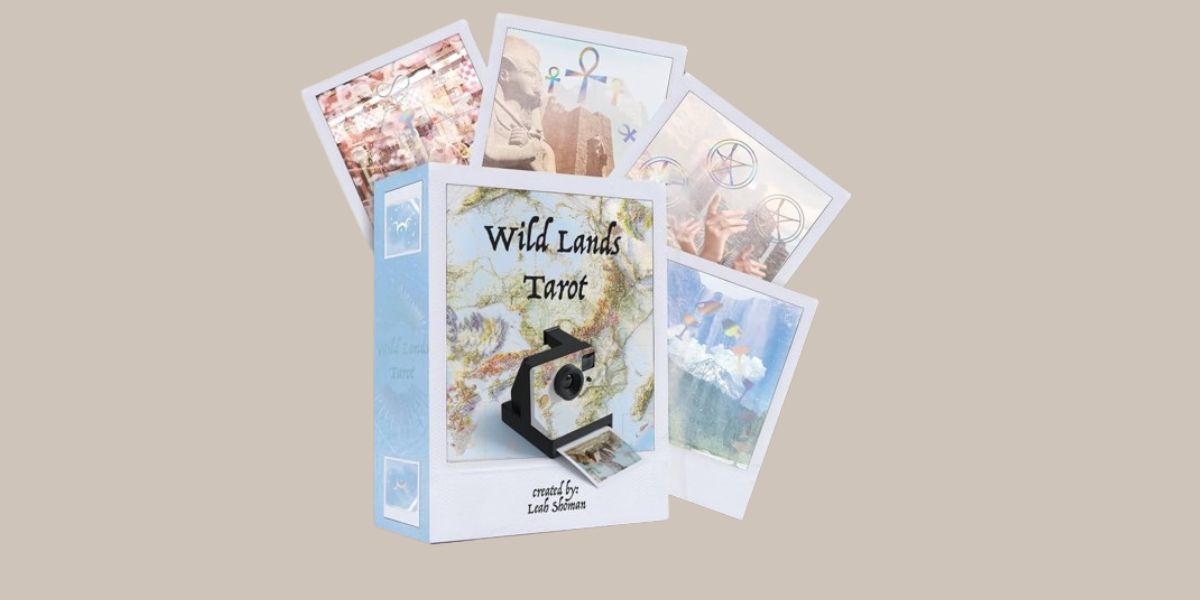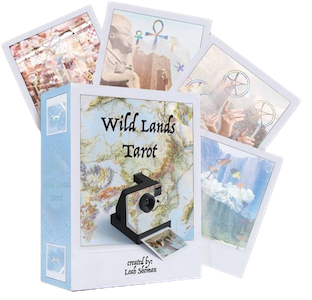
Wild Lands Tarot, by Leah Shoman
Sacred Scribe Publishing, 9798987986608, 78 cards and 96 page guidebook, 2024
Wild Lands Tarot initially caught my attention because of the design. I’ve been fascinated by pictorial decks lately and the polaroid aesthetic of this deck especially appealed to me as a lover of all things vintage, so I knew I would have to give Leah Shoman’s creation a try.
Honestly, I wasn’t disappointed.
The pictorial base of the deck was beautiful, and the silver-foil embellishments were an unexpected addition that served to enhance the connections between the photographs and the specific card that they represented. However, the images selected for the deck seemed to be a little eclectic rather than revolving around a specific theme; the majority were either Japanese or Egyptian in nature, though occasionally there were some based on landscape photography as well.
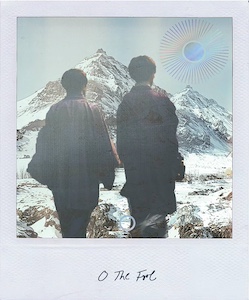
I would have appreciated a section of the guidebook dedicated to the selection of the images. Why did Leah choose a particular image for one card over another? Why did she blend the images together or choose to overlay them like she did? Some explanation around those topics would have given the deck even more depth that I personally would have enjoyed.
The guidebook that came with this deck contained a dedicated page for each card, as well as two different spreads, and some information for a one-card draw. The interpretations follow what has become standard for Rider-Waite-Smith (RWS) based decks.
However, the Wild Lands Tarot did rename two of the suits. The deck has the traditional Wands and Cups, but has replaced Swords with Ankhs and has renamed Pentacles to Coins. As you can imagine, most of the Egyptian themed images belonged to the suit of Ankhs, while Coins and Cups were primarily landscape and nature-based photography, and the suit of Wands contained primarily Japanese imagery.
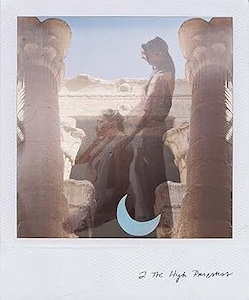
The Major Arcana is where all three of these themes collided; some were Egyptian coded, others Japanese, and still others landscapes. The thing that most seemed to anchor the images to the cards they represented was the silver-foil overlays, which really helped to bridge the gap between the image and the traditional RWS majors. Without the foil images, I don’t necessarily think that I would have connected a lot of the photographs to their corresponding archetype.
The cards of the Wild Lands Tarot, in keeping with the vintage polaroid aesthetic, were shaped like the film that you would have to shake until they developed. (Yes, I know you remember those!) While that shape is not at all common in the world of tarot, I feel like it added to the appeal of the deck and the sense of nostalgia and hiraeth that permeates it. It is, however, an odd shape to shuffle and the cards weren’t the most comfortable to handle. They also have pointed corners, which isn’t something particularly prevalent in tarot, which tends to favor the rounded corners for comfortability and/or ease of use.
As far as handling goes, though, I absolutely loved the thickness and feeling of the cardstock. It’s definitely on the thicker side, which is my personal preference (I feel like it will last longer); coupled with the smooth yet still tactile matte finish, I was almost in cardstock heaven. Shoman got that aspect of her deck, in my opinion, just right.
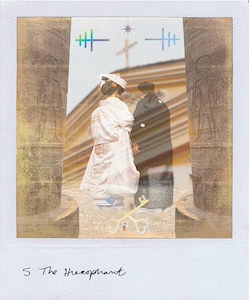
When I pulled the deck out to give some friends readings, they all agreed that they loved the back of the cards. The light blue color gives a hint of the whimsy of the deck while keeping true to a more natural color palette. The silver foil is also present on the back, where it outlines a triple moon surrounded by the signs of the zodiac.
When it came down to it, though, I had a bit of difficulty actually reading with the Wild Lands Tarot. Shoman’s photography, as I’ve mentioned throughout this review, was stunning; however, I really struggled to visually connect the cards, possibly due to the lack of cohesion among images.
Overall, I feel that Wild Lands Tarot is best suited for people who prefer to use cards with surreal and whimsical imagery in their readings. Despite its lack of a single, cohesive theme, this deck brings a sense of beauty and nostalgia for all that once was, and all that could be. I, for one, am glad to have it in my collection to fulfill my longing for far-off places that I may never truly come to know.
